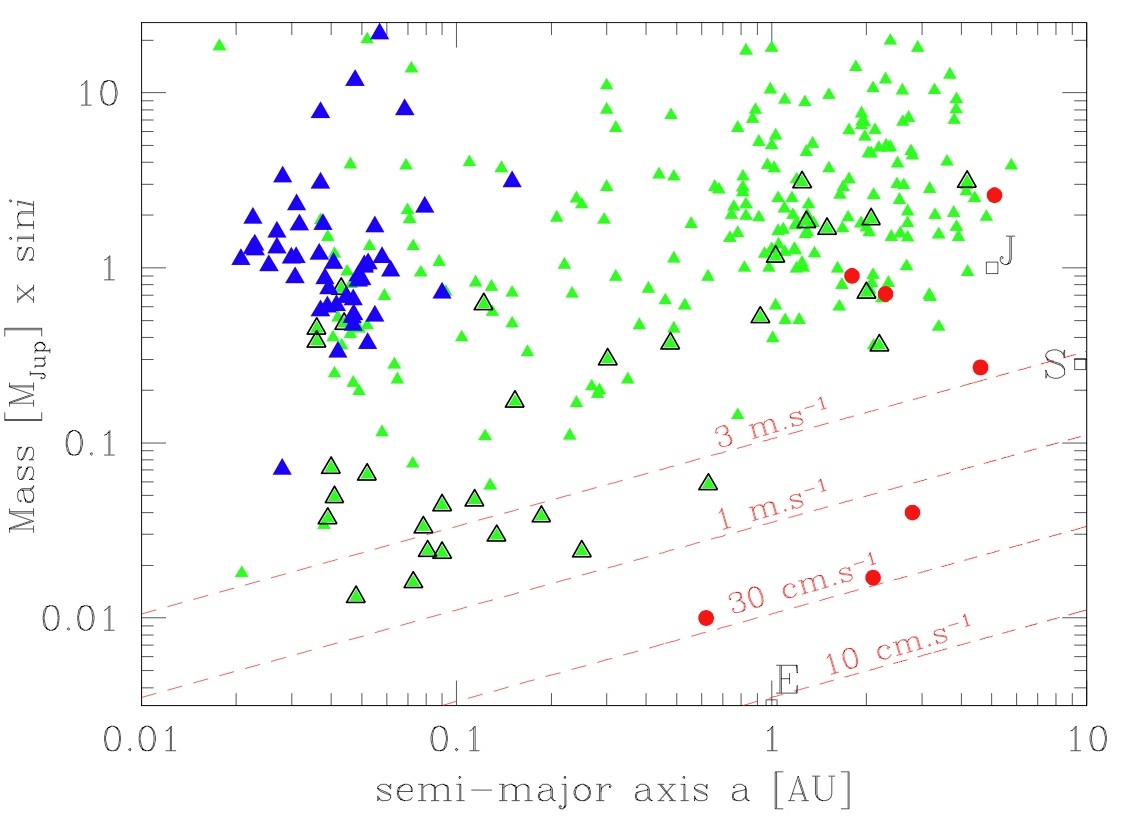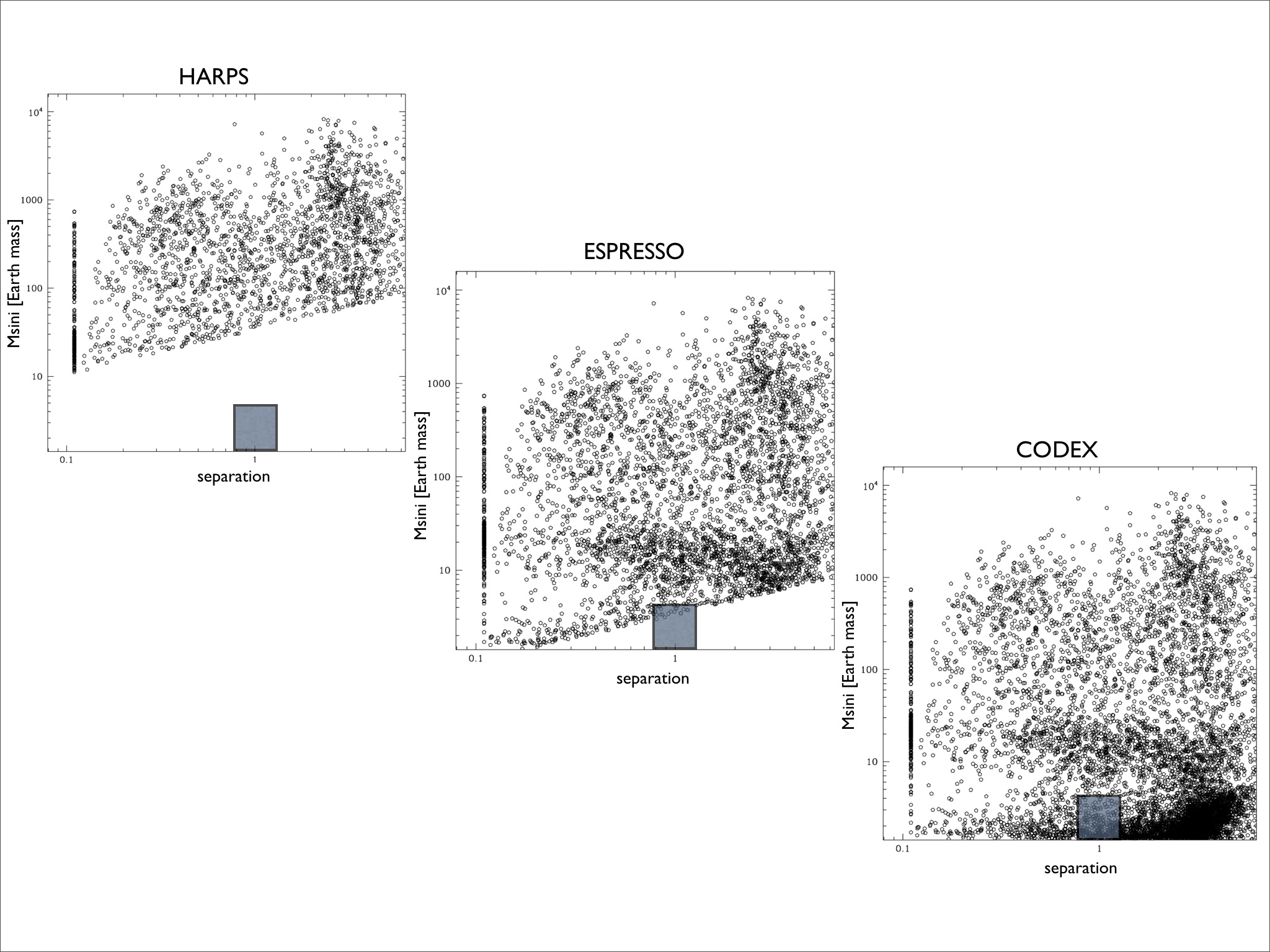CODEX Show Case 2
The complete science document (as it was prepared for Phase A , Feb. 2010) is available here in pdf format.
-
Detection of Earth twins in the Habitable Zone of solar-type stars.
The search for extra-solar earth-like planets which at least in principle could sustain life similar to that on our planet catches the imagination of scientists as well as that of the general public. The required accuracy for radial velocity searches to detect rocky planets in the habitable zone of 10 cm/s is in reach with the proposed HARPS-like spectrograph ESPRESSO for the VLT. With the 2 cm/s accuracy of CODEX it will be possible to assemble and study sizeable samples of earth-like planets in the habitable zone of their parent stars.
Figure 3.

Mass-separation diagram of 300 known exoplanets. The triangles refer to exoplanets found by radial velocities. The dark triangles refer to transiting exoplanets. The circles refer to exoplanets found by microlensing. The bold triangles correspond to exoplanets discovered with HARPS. Lines of radial-velocity semi-amplitude of 3, 1, 0.3 and 0.1 m/s are shown, assuming a 1-Msol primary star (from Bouchy et al. "The HARPS search for southern extra-solar planets. XVII. Super-Earth and Neptune-mass planets in multiple planet systems HD 47186 and HD 181433 ", 2009, A&A, 496, 527).
Figure 4.
Expected planet population to be detected by Doppler spectroscopy, after applying observational limits for radial velocity measurements, with the HARPS/3.6m (precision of 1 m/s; left), ESPRESSO/VLT (precision of 10 cm/s; middle) and CODEX/E-ELT (precision of 1 cm/s; right) spectrographs. For a larger (readable) version of the figure, click on it. [Credits: Stephane Udry. See also Mordasini et al. 2009, A&A, 501, 1161].
